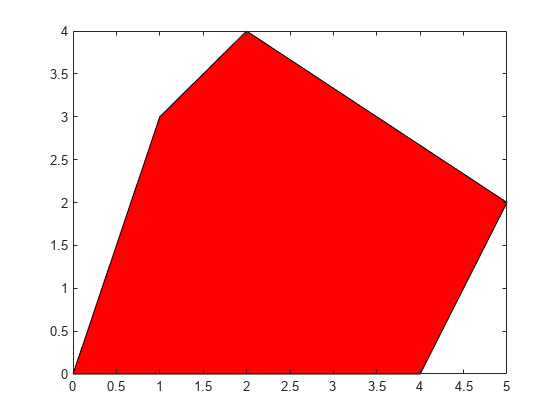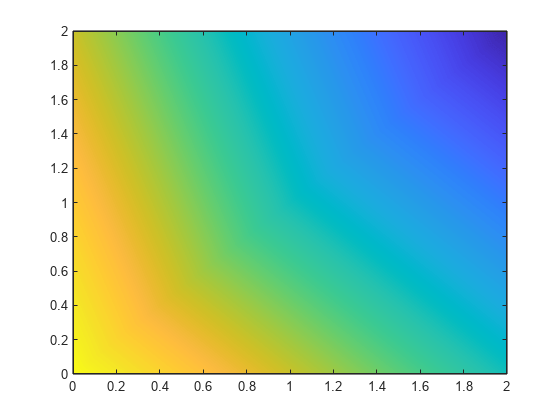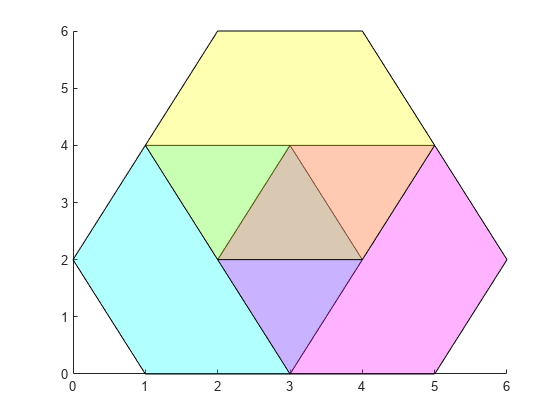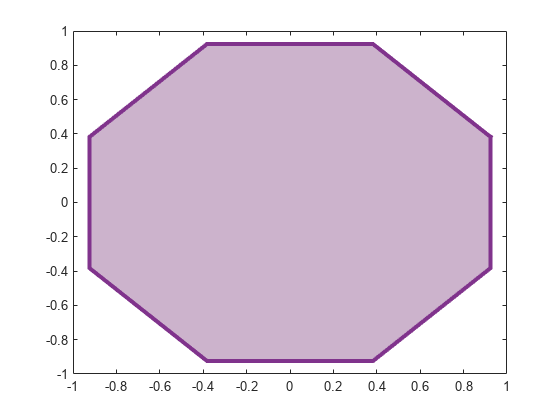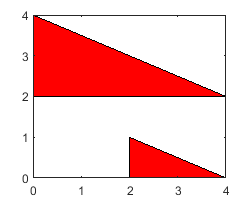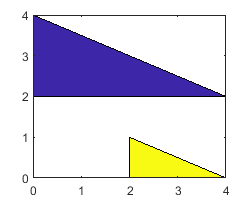fill
塗りつぶされた 2 次元パッチの作成
説明
fill(___, は、1 つ以上の名前と値の引数を使用してプロパティを設定し、パッチを変更します。パッチは、前述の構文にある任意の入力引数の組み合わせを使用して指定できます。たとえば、Name,Value)fill(X,Y,C,'LineWidth',2) は、すべてのパッチの周囲に 2 ポイントの境界線を指定します。プロパティの一覧については、Patch のプロパティを参照してください。
fill( は、現在の座標軸 (gca) ではなく、ax,___)ax で指定した座標軸に多角形領域をプロットします。引数 ax は、前述の構文における任意の入力引数の組み合わせの前に指定できます。
p = fill(___)Patch オブジェクト、または Patch オブジェクトのベクトルを返します。領域をプロットした後にプロパティのクエリと変更を行うには、p を使用します。プロパティの一覧については、Patch のプロパティを参照してください。
例
入力引数
名前と値の引数
出力引数
代替機能
一部の関数では、fill のすべての機能や、多角形のプロット、操作、クエリのための追加オプションを使用できます。適切な場合は、fill の代わりに次の関数を使用します。
正多角形を作成するには、
nsidedpolyを使用します。この関数を使用すると正多角形の作成が単純化され、プロットされる多角形の位置と次元を管理するための追加オプションを使用できるようになります。nsidedpolyはpolyshapeオブジェクトを作成します。また、polyshapeの作成後に位置、半径、辺の長さを変更するための追加オプションを使用できます。nsidedpolyにより作成されたpolyshapeは、polyshapeのすべてのプロパティ、およびnsidedpoly限定のプロパティを使用して操作できます。非正多角形を作成するには、
polyshapeを使用します。この関数では、多角形を定義するための追加オプションを使用できます。polyshapeはpolyshapeオブジェクトを作成します。このオブジェクトには、多角形の作成後にクエリと変更を行うための追加プロパティとオブジェクト関数があります。完全な一覧については、polyshapeを参照してください。Patchオブジェクトをfillと同様に作成するにはpatchを使用します。この関数では、面と頂点のデータにより 2 次元および 3 次元のパッチを定義するための追加オプションを使用できます。

